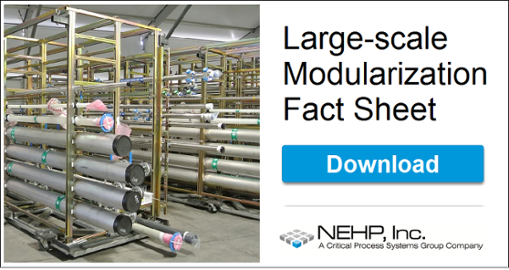/8-wastes-of-lean-inventory-waste.png?width=276&height=254&name=8-wastes-of-lean-inventory-waste.png) WHAT ARE THE EFFECTS OF INVENTORY WASTE IN CONSTRUCTION?
WHAT ARE THE EFFECTS OF INVENTORY WASTE IN CONSTRUCTION?
Inventory waste, also known as excess inventory or overproduction, is one of the eight wastes commonly identified in Lean Construction principles. It refers to the accumulation of materials, components, or finished products beyond what is immediately needed for the construction project. This excess inventory ties up capital, occupies valuable space, and can lead to various inefficiencies and problems within the construction process.
Below, we take a closer look at 8 consequences of inventory waste within the context of Lean Construction:
-
Ties Up Capital: Excess inventory represents tied-up capital that could be invested elsewhere in the project or used for other purposes. This ties up financial resources that could be allocated more effectively to address project needs or invest in improvements.
-
Occupies Space: Unnecessary inventory occupies valuable space on the construction site or in storage areas. This can lead to congestion, disorganization, and safety hazards, as well as additional costs associated with storage and maintenance of excess materials.
-
Increased Lead Times: Excessive inventory can lead to longer lead times for materials procurement and delivery. This happens because it becomes challenging to identify and access the required materials efficiently amidst the surplus. Longer lead times can disrupt the construction schedule and delay project completion.
-
Risk of Obsolescence or Damage: Excess inventory increases the risk of materials becoming obsolete or damaged before they are used. This can occur due to changes in project requirements, design revisions, or prolonged storage periods. Obsolete or damaged materials result in wasted resources and additional costs to replace or repair them.
-
Reduced Flexibility: Having excessive inventory limits the flexibility of the construction process. It becomes difficult to adapt to changes in project scope, design modifications, or unexpected issues when excess materials are already in place. This lack of flexibility can hinder responsiveness and agility in managing project dynamics.
-
Hidden Defects: Excessive inventory can mask underlying quality issues or defects in materials or components. When there's a surplus of inventory, defects may go unnoticed until materials are actually used in construction, leading to rework, delays, and additional costs to rectify the problems.
-
Increased Waste: Surplus inventory contributes to increased waste throughout the construction process. This includes waste associated with material handling, storage, transportation, and disposal. Minimizing inventory waste helps reduce overall waste generation and promotes leaner, more efficient construction practices.
-
Environmental Impact: Excessive inventory can have negative environmental impacts, such as increased resource consumption, energy usage, and emissions associated with the production, transportation, and storage of materials. By reducing inventory waste, construction projects can minimize their environmental footprint and promote sustainability.
In summary, inventory waste in lean construction represents the accumulation of excess materials beyond what is immediately necessary for the project. Addressing this waste involves implementing strategies to optimize inventory levels, improve material management practices, and enhance overall project efficiency and effectiveness, all of which can be accomplished through modular offsite construction.
If you would like more information about how we can help you reduce lean waste and improve construction site productivity, please feel free to access our large-scale modularization fact sheet below:
OR
